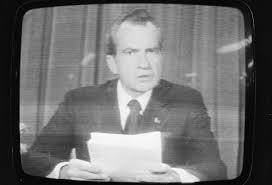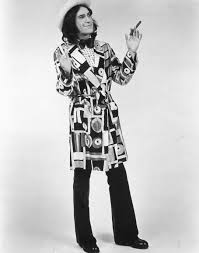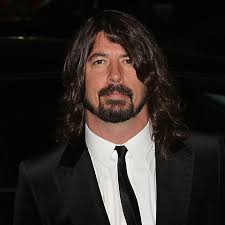When I use this phase “The Secret History of Rock’n’Roll,” I am not talking about hushed conspiracies, or Masonic veins running through the seats of power, or ancient aliens having drawn something in the Central American Desert 2,000 years ago that looked just like the album sleeve to Supertramp’s “Breakfast In America” (though how cool would that be? Very, very cool, I tell you).
The Secret History of Rock’n’Roll is the long cast of largely unknown characters who were massively influential, far beyond their common fame. The Secret History isn’t just the chronicle of celebrated outsiders whose work is called pioneering, like, for instance, Lou Reed or Brian Eno; it’s the story of the people who influenced those people. The Secret History is the story of the inventors whose work, done largely in the shadows of cult-dom and obscurity, profoundly shape-shifted the course of the Painted Golem That Is Pop And Rock, the giant who chases us in our dreams and whose grunts, groans, and lullabies are the soundtrack of our life.
It is not necessary to leave the work of these groundbreakers to the geeks, collectors, and followers of the fringe; nothing untoward will happen if a little mainstream light is shone their way.
When I speak loudly and proudly of the Secret History, I am talking about people like LaMonte Young, the avant-garde drone composer who began working in New York City circa 1960. Young created the sonic and instrumental palette of Jet-Age drones, end-of-the-world thumps, and Indian-intonations that we would later associate with the Velvet Underground; in fact, the original nexus of the Velvets, John Cale, Tony Conrad, and Angus Maclise, all came out of his ensembles. Cale had the notion of using Young’s extraordinary musical vocabulary as the setting for quasi-pop songs, of introducing Dylan-esque word-rambles and Motown soul-riffs into Young’s dronescapes; with this confabulation, one of the most profoundly influential and intriguing bands in rock history, the Velvet Underground, were born, and none of it would have happened without Young’s prior work.
A very similar character in the Secret History is New York composer Glenn Branca, who began making his mark in the late 1970s; influenced by LaMonte Young and European industrial-noise neo-classicists like Penderecki and Xenakis, Branca used multiple guitars, tuned and played in a unique style he perfected, to mimic the sound of large orchestra sawing, hissing, and screaming. Via extreme volume, unison tuning and de-tuning (i.e., literal detuning of the instrument), and a “double strum” technique involving strumming the guitar at 16 and even 32 strums per measure continuously for extended periods, Branca was able to create the sound of steel tanks moving across a barbed-wired desert; it was (is) unrelenting, extreme, beautiful, often absolutely angelic, capable of reproducing the end of the world as no synthetic instruments or orchestra ever could. It is also the “sound” that Thurston Moore and Lee Renaldo, Branca ensemble members in the early 1980s, borrowed, virtually without alteration, when they created Sonic Youth. Like Cale and Reed a generation earlier, Renaldo and Moore took the specific techniques of a composer they apprenticed with and applied these techniques, previously used only in long-form compositions, to a short-form “song” format. When you listen to Sonic Youth, anything by Sonic Youth, you are hearing the invention of Glenn Branca.
There are literally dozens more figures like this, and their genius and their innovations comprise the wonderful Secret History of Rock’n’Roll; some of them are better known, like Joe Meek, some of them lesser known, like the person who really was meant to be the focus of today’s column, Hans Joachim Roedelius.
You, and you, and you, too, and you there with the glasses, and Layne, and you sitting there in the corner wondering what the hell went wrong with Arcade Fire, you all should know about Roedelius. He has been making music very regularly since 1970, and virtually everything he has ever done, at every stage of his work, is vastly listenable, intriguing, and unique but infinitely user-friendly.
Starting around 45 years ago, Roedelius used analog and synthetic keyboards to create magical melodic, rhythmic, and textural landscapes, sometimes emerging as almost bubble-gum like pop songs; other times as Satie-like melodies of profound and exquisite emptiness and air; and still other times as proto-industrial bubbles of noise and rhythm. He was doing all this inventive stuff prior to 1976, after which his keyboard-driven mixture of pop and art, ethnic rhythms and noise, simplicity and invention, became far, far more common, due to the spreading of his influence. In his groups Harmonia and Cluster, as a solo artist, and in many collaborations, Roedelius has created a consistently wonderful catalog of startling soundscapes, and pop concrete.
Most pertinently to the non-follower of Krautrock’s delicious and endless obscurities, if LaMonte Young birthed the Velvets and Branca sired Sonic Youth, Roedelius is the primary influence on Brian Eno, a man often thought of as devoid of such influences. Eno’s entire musical world-view – the eccentric mad scientist creating large-screen but minimalist worlds of melody and texture on the keyboards – is an appropriation of the work and innovations of Roedelius (by the way, I am fairly certain Eno would happily admit this; he began recording with Roedelius in the mid-1970s, and they have made numerous remarkable albums in various combinations together). Roedelius pioneered the softening of Krautrock’s aggressive guitar landscapes and minimized avant-jazzisms into a form of luxurious, melody-ripe keyboard excursions, often condensed into a “song” format Krautrock largely disdained. In the process, Roedelius did two very fucking substantial things: he essentially invented ambient music, and he essentially invented Brian Eno. In addition to these two very significant achievements, Roedelius harnessed the keyboards and found a way to bridge the lyricism of classical music with the minimalism of avant-garde music, all the while keeping a firm foot in pure pop song.
(A little explication of terms: when I say “ambient” music, I am using it in the distinctly German/Eno-esque sense of the term: a wide-screen road full of very interesting bumps, rock, and potholes of noise, melody, and concept, anticipating and integrating the simplicity of punk rock but with even more adventure; secondly, although it may initially appear derisive or even racist, I am use the term Krautrock because it is the widely accepted name of a specific genre of music, specifically the explosion of wildly diverse, madly creative, magnificently influential music that exploded out of West Germany between 1969 and 1980. I will write at far, far greater length about Krautrock in the near future, because that epoch is literally nothing less than the greatest fruition and realization of Caucasian Rock’s creativity and promise.)
We also note, with many, many exclamation points implied but not actually employed, that Herr Hans Joachim Roedelius is still very much alive and very active musically, at the age of 80; like Neil Young, Scott Walker, and sometimes Paul McCartney, he is an artist whose current work is still very, very vibrant and alive, and every bit as worth investigating as any of the archival stuff. Now, Roedelius is one of those artists with a complicated discography, full of many labels and compilations; just get any or all of them. There’s your damn buyers guide. If it has Roedelius’s name on it, buy it. There is a resounding unity of quality to his work, always consistent yet always surprising.
If you are a lover of music beautiful and challenging, devastatingly familiar but shockingly creative, if you have ever listened to Chill-Out music or Album Leaf or any of that Buddha Lounge garbage and wished it was better, wished it felt like rock’n’roll yet had the grace of Brahms or Satie or the Goldberg Variations, Roedelius is your man. He is one of the Kings of Contemporary Music, and when one investigates The Secret History of Rock’n’Roll, investigates it with joy, an open heart, an open mind and ears tuned fiercely to the heroic seeds of the music of our life, I hope you find utter delight in the emotional magic and sweet/bittersweet dreams to be found in the work of Hans Joachim Roedelius.





